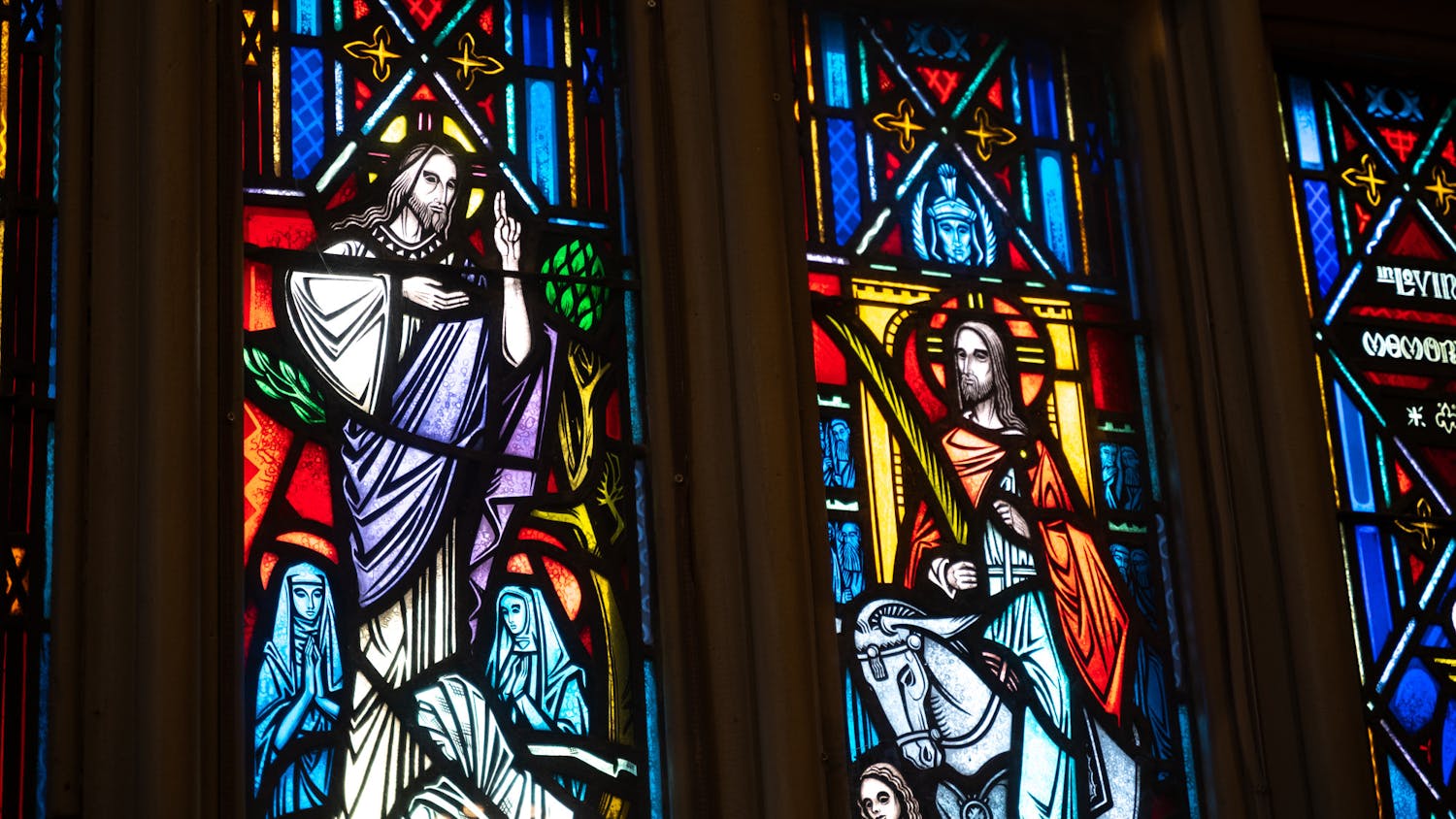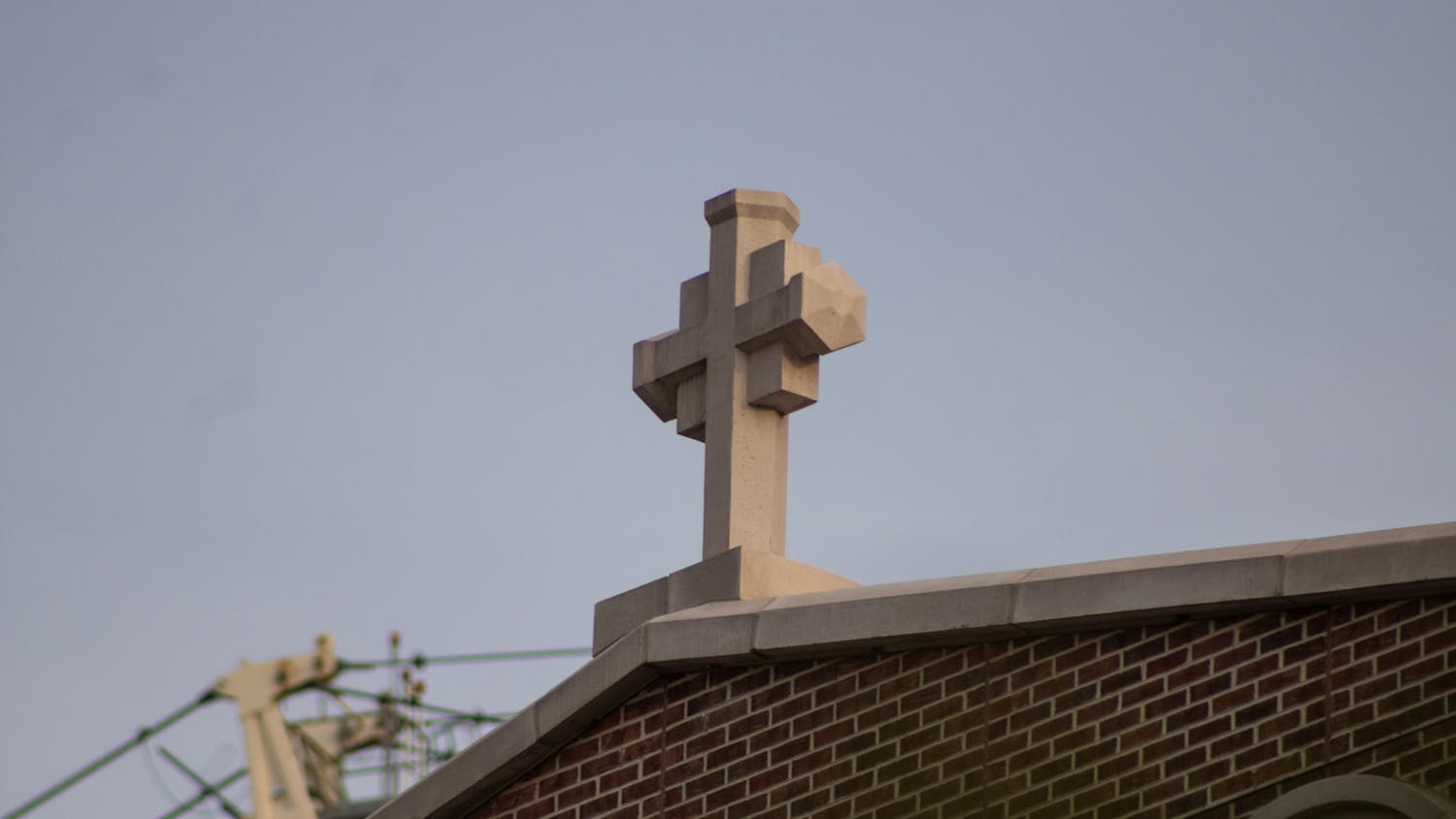The idea of visiting an exhibit titled “Illuminating the Word” sounded daunting to us. One of us believes in a higher power, but can’t explain what, while the other has a childhood commitment to religion. The Chazen Museum of Art’s new exhibit is singularly devoted to The Saint John’s Bible. The creation, a collaboration from calligrapher Donald Jackson and a team of artisans, is described in the exhibit as the “first handwritten, illuminated Bible to be commissioned by a Benedictine monastery in five hundred years.”
If the description is not enough to discourage one from going, the imposing glass cases and rows of scripture might. But fear not. It merely takes an open mind to appreciate the inherent beauty of the ancient calligraphy and complementary paintings. The unique combination of art and scripture, though intimidating to the average eye, speaks to people of many faiths, traditions and cultures—even dubious college kids.
The 24 inch by 34 inch pages are a far-cry from what you would find at your regularly attended Sunday service or in the top drawer of the hotel nightstand. In the artwork, there are metallic holographic elements visible on the vellum (calfskin) surface, combined with ink, paint, gold and silver adornments. Common themes between the different biblical pieces are butterflies, flowers, ancient cultural themes, old maps, dark colors—especially purple—and geometric and reflective elements.
Although the works of art speak volumes about the magnitude of the artisans’ skill, the adjoining room gives a tangible representation of their labor. On one wall, a BBC informational video depicts the painstaking time, precision and detail it takes to write even a single letter. The tool that the artist used is the same type of utensil scribes previously used. The amount of effort put into just getting the artistic tool used to do the calligraphy is enough to be called art—it is a plucked feather soaked in water, hardened in a frying pan with sand. But to Jackson, the time is worth it because “the feather is capable of picking up the energy and emotion from the souls of my feet to the top of my head onto the paper.”
The pieces, in their own beauty and interpretation, do not demand the same conclusion, despite their obvious religious overtones. For one of us—a soulful, faithful, but not deeply religious college student—the Ten Commandments piece lingered long after its prominent opening place. It was unique, colorful and obvious. The top of the piece read “Here I am, the Lord your God of your fate, Here I am, the lord your God,” in large gold metallic print, and below it the Ten Commandments were listed out in fairly regular sized, faded black print down the page. The top of the page is bold, strong and almost garish on the eyes, but further down page, it becomes softer, and more art than religion. To the other student, the piece is a testament to the towering capacity that the Commandments possess in their own true meaning. Rigid, traditional paintings of twin stone tablets are surprisingly pleasing, and replaced with a contemporary interpretation that is no less strong in religious merit. The Ten Commandments piece embodies the different aspects someone focuses on, especially when one has with a lack of knowledge of religion, while the other grew up reading The Bible.
The pieces look different and carry different meanings. As visitors to this exhibit, and merely humans with a soul for art and faith, we urge you to find your place in the artists’ work, be it the biblical or graphic art aspect, or simply be there and appreciate the effort of the unique project.





